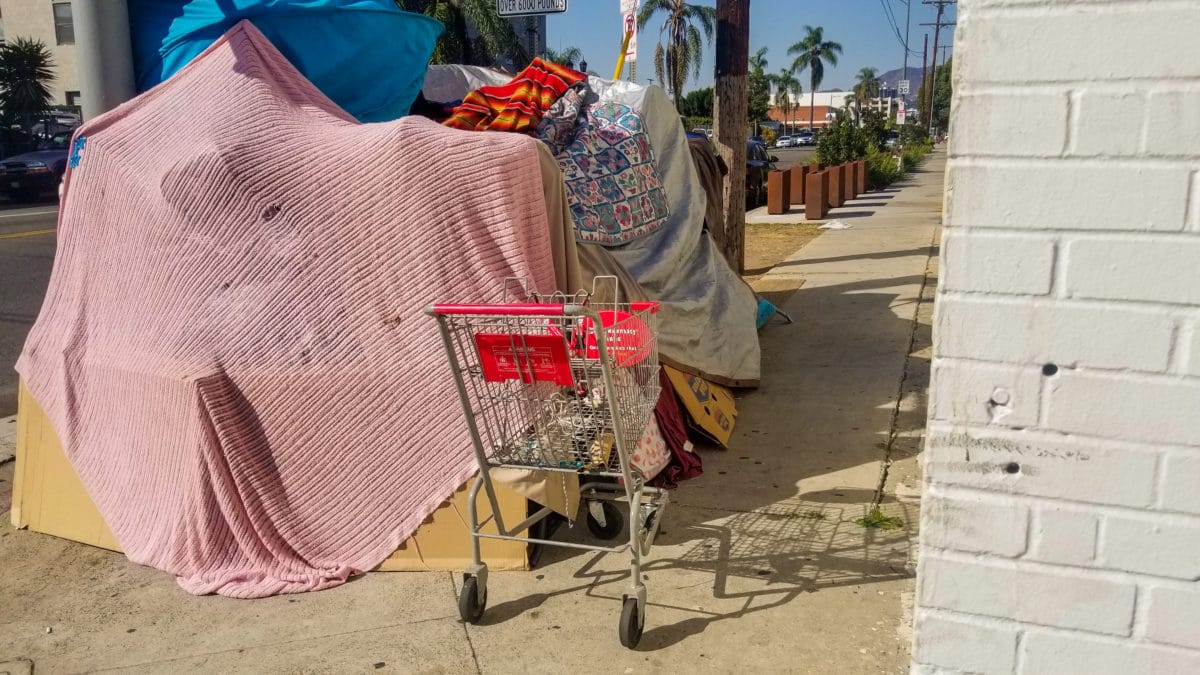[dropcap size=big]P[/dropcap]lanters, those eyefuls of modern DIY gardening may appear to be an excellent use of urban space in Los Angeles, but they are unfavorable to the city’s growing homeless population. Some of the planters grow vegetables like kale but more of them contain succulents and sometimes just dry dirt.
Back in May, the City Council passed a motion to inspect and enforce laws that make sidewalk planters and DIY fencing illegal in some cases, “when and where appropriate.” But as of early November, hundreds of planter boxes and blocks of illegal fencing still exist throughout the city.
In Koreatown on the corner of Wilshire Boulevard and Wilshire Place, a giant 230,000 square foot art deco building dominates most of the block. The former luxury department store, built in 1929, is now home to the Southwestern Law School. With its large gates and standard fencing, the property is built like a fortress to keep outsiders beyond its perimeter.
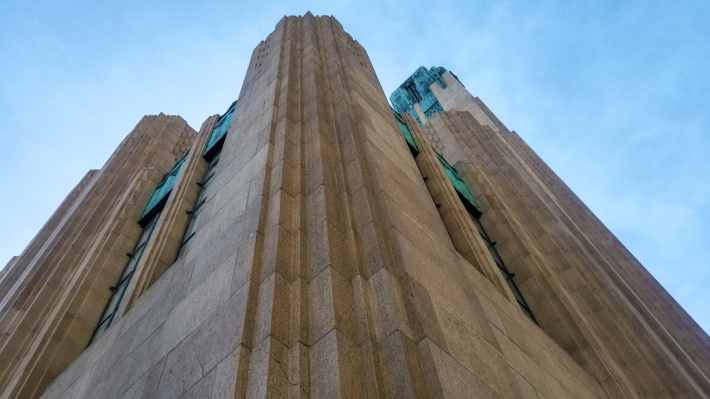
Outside on the curb, the school has installed an entire blocks worth of illegal fencing made out of tenax, an inexpensive type of plastic fencing more commonly used to keep deer away from trees and poultry caged. The green plastic material stretches around the perimeter of Southwest Law like a moat around a castle.
On October 1, 2019, the Southwestern Law School was issued a “notice of violation” according to Jane Nguyen, an organizer with K-Town For All. The makeshift fencing has been up since at least February according to K-Town For All and the group has been working since April to get it removed, repeatedly calling 311 to file reports with the city. After months of complaints, the fencing around Southwestern Law School finally came down. As of November 6, 2019, there is no longer any make-shift fencing around the block.
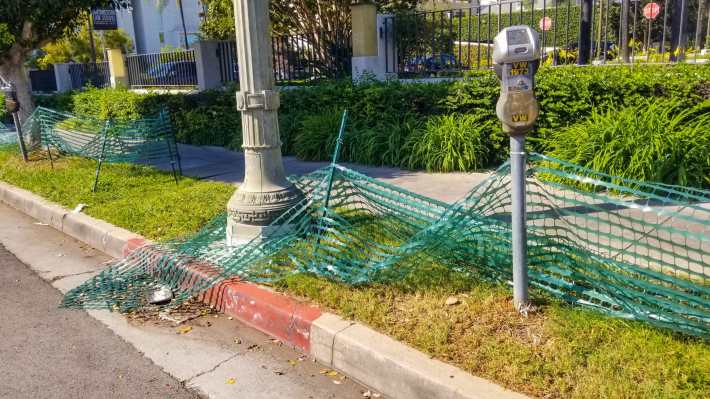
A Lack of Regulation by the LAPD
Four miles north of Koreatown, on Cahuenga Boulevard between Santa Monica and Melrose, studios and other businesses in the entertainment sector dominate the area. Back in March, L.A. Taco reported on numerous anti-homeless planters in the area as well as emails that suggested their true purpose. Those emails document interactions between employees at various entertainment companies spending months plotting against the homeless and organizing the installation of planters.
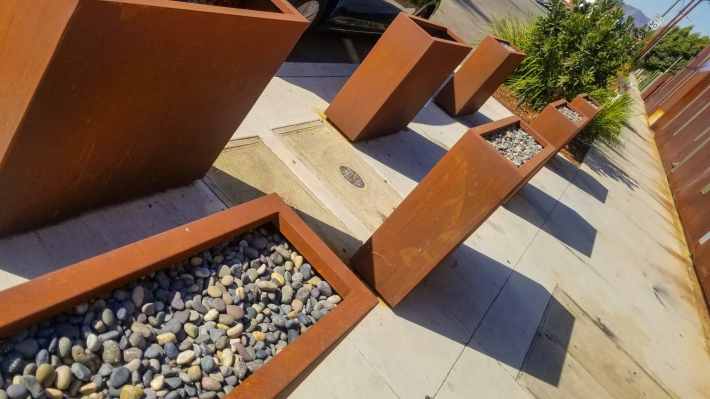
In addition to private citizens working to install planters, emails have also revealed that city officials and the LAPD have encouraged the installation of anti-homeless planters, despite Chief Michael Moore publicly stating that the LAPD was not involved in sidewalk planters.
In some ways, it seems like the planters in Hollywood have encouraged people to go elsewhere, but that doesn’t mean the problem has gone away.
“Officer Guerra made it clear that this was still only a temporary fix though it would be better than power washing while pooling more resources to beautify the actual street,” reads an email from Daniel Ellinger, an employee with Red Studios at the time, referring to installing planter boxes. In the email, he suggests that the idea came from Senior Lead Officer, Eddie Guerra, and employees at Quixote Studios.
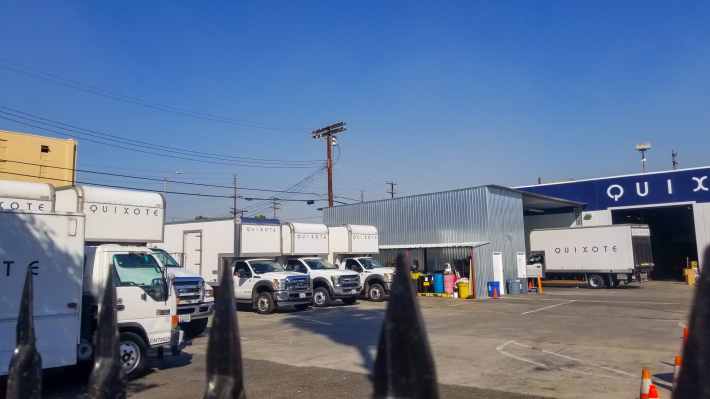
In a newly obtained email from November 27, 2018 by MichaelKoohlaas.org, a blog that obtains public records, between Officer Guerra and Dan Halden, a former field deputy with Mitch O’Farrell’s office, Guerra writes, “We will come back and do our best to schedule a sanitation to this area as well, I’ll keep you posted with the date. Any chance on putting plants in those areas after our clean up.”
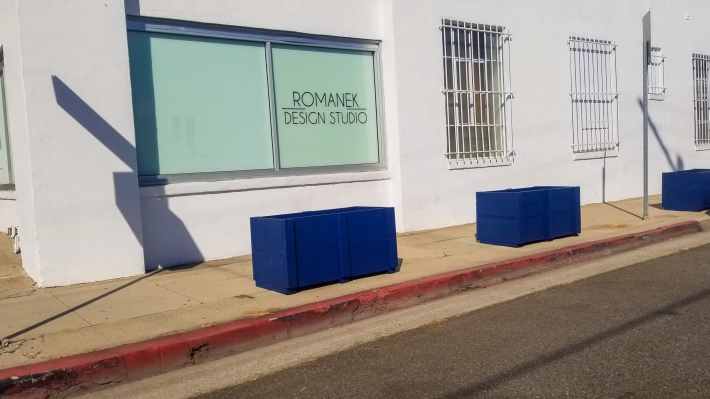
L.A. Taco recently checked up on the planters that we reported on over six months ago in Hollywood. Almost nothing has changed, virtually every planter that was there in March still remains and there have been no apparent efforts to “beautify the actual street.” Almost all signs of homelessness have been erased from the sidewalks, minus a couple of scattered tents.
In some ways, it seems like the planters in Hollywood have encouraged people to go elsewhere, but that doesn’t mean the problem has gone away.
Sleeping on Planters in Venice
Within the three square miles that make up Venice, there are hundreds of planters.
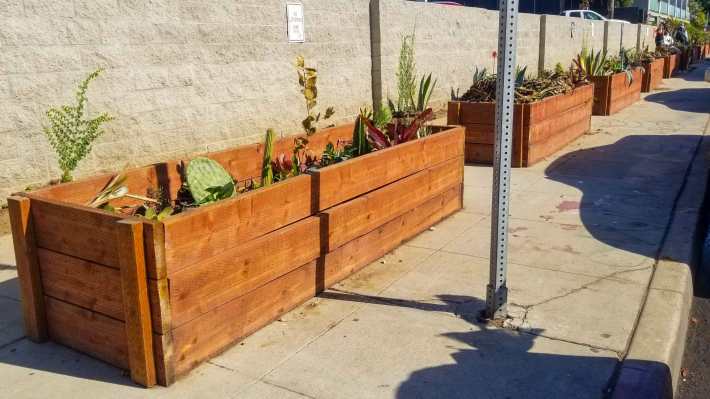
On Lincoln Boulevard and Milwood Ave, planters line the perimeter of a Staples store. Unlike other parts of the city, some homeless people have learned to adapt to the changes. One person has turned a planter box into a bed and small living quarters, others have found space to congregate in between planter boxes.
One resident turned a garden hose on him, “he decided to water me with his roses.”
Terry Hanratty is one of the people that have made a home near Staples. He grew up over 2,700 miles away from the pacific coast in Philadelphia before making his way west with his father. After losing their home in Arizona, Terry and his father became homeless. Together they survived on the streets, living in parks and making ends meet by relying on government aid. Eventually, the pair moved to Santa Rosa before Terry’s father passed away four years ago.
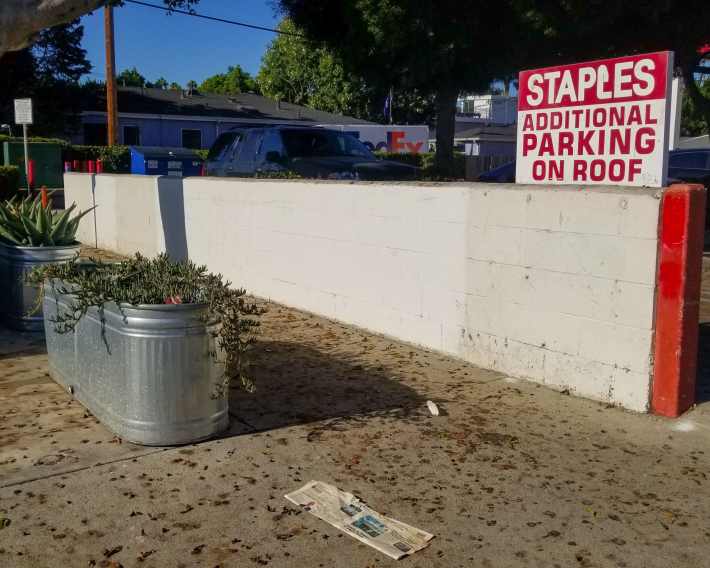
After a stint in Santa Rosa looking over warehouses and private homes that grew weed for a while, a spell of paranoia pushed Hanratty onto the streets. He relocated to the westside of Los Angeles five months ago where he’s been living ever since.
Before he found a home near the Staples on Milwood Ave, Terry slept in the parkways around Venice, “I would find the most expensive house I could and sleep there.” Residents of Venice weren’t so fond of Terry occupying the public space of grass in between the road and the sidewalk though. One resident turned a garden hose on him, “he decided to water me with his roses.” Another housed resident made him feel unwelcome by waking him up with a scolding, “You don’t belong here!” The Venice resident shouted while shaking his belongings.
L.A. Taco checked the permitting status of over 150 planters through a CPRA request with the Department of Public Works in Los Angeles and found that none of them were permitted.
Terry is one of the newest members at the Milwood encampment and says things are going alright for now. “We try and keep the path clear,” residents of the encampment are looking to strike a balance between their living needs and the expectations of the community. They’re conscious of the stigma towards them and do their best to keep things orderly, “It’s tough though because we have no money, and we’re trying to live.”
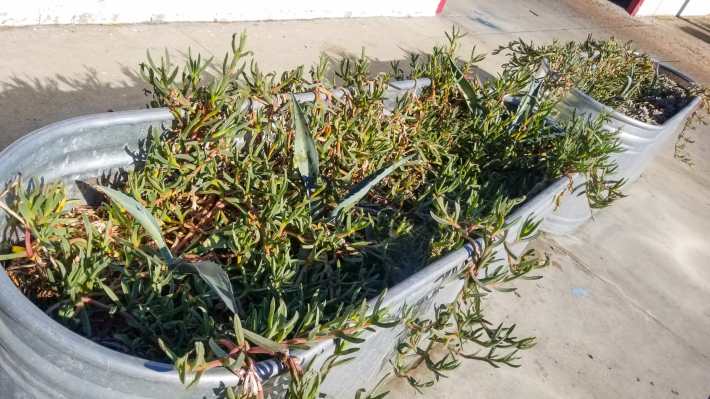
Terry spends most of his time away from his makeshift tent, trying to earn money through recycling or selling his artwork. He thinks that instead of planters, the city could use parkways to build small sheds for homeless people, a controversial idea that some homeless advocates have thrown around while the city lags behind on creating more permanent supportive housing. “I think every planter box should be a potential house for the homeless. It would be great if they could do that because then a lot of the tents wouldn’t be up around the city.”
A City of Planters
The planter boxes and fencing seen around the city are largely unpermitted. In addition to violating ADA laws in many cases, sidewalk planters interfere with the public right-of-way. Elena Stern, the senior public information officer with the department of public works tells L.A. Taco that there is a way of obtaining a permit to install planters on the sidewalk.
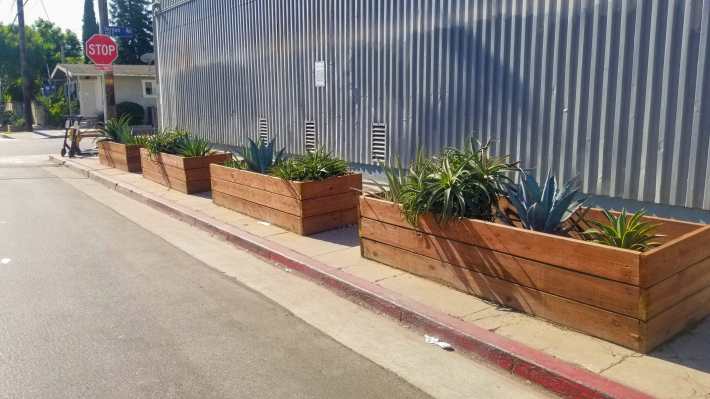
L.A. Taco checked the permitting status of over 150 planters through a CPRA request with the Department of Public Works in Los Angeles and found that none of them were permitted.
Emails obtained by MichaelKohlhass.org show that in the case of the planters in Venice, many of them were installed under watch by the LAPD as well as local city officials and at the discretion of the Venice Neighborhood Council, despite all three parties saying otherwise in the past. Taylor Bazley, a former field deputy for Councilmember Mike Bonin’s office told an organizer in May 2018 that Bonin’s office wasn’t involved in installing planters.
The city cares about regulating our sidewalks when it’s in their interest, such as using sidewalk ordinances to shuffle the homeless around and limit street vending. But when it comes to planters, the city depends on its loopholes, rather than address the current crisis at hand.
But emails from as early as 2017 reveal that the field deputy played an active role in displacing the homeless, “Did the plan to install desertscape/planters/anything on third to constrict the sidewalk stall? I think that will harden 3rd significantly from future encampments. I have noticed more people moving on to 3rd and have a concern that if we don’t change the built environment (because lord knows the regulatory environment isn’t changing anytime soon) than the encampment will return over time,” Blazley wrote via email in 2017
Bazley no longer works in Bonin’s office.
In September, Councilmember Mike Bonin told L.A. Taco that the Bureau of Street Services is looking into creating a permitting process for certain planters. In his district, there are some planter boxes that grow vegetables and are argued to help the homeless and other groups in need. They’re also considering grandfathering in planter boxes that were installed before the motion that doesn’t violate ADA laws.
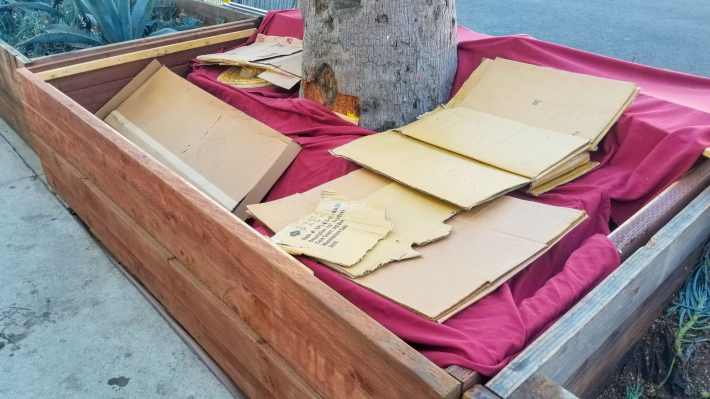
More than 70 of the planters seen in Venice come from the Community Healing Garden, a program that began as a social experiment in 2015. “Our street side raised garden boxes growing food provides produce to our local shelters, community centers and anyone walking by who desires to harvest,” CHG website reads. Planter boxes rent for $1,200 a year or $2,000 for two years of $3,000 for 3 years.
Calls and emails from L.A. Taco for further clarification directed at Mike Bonin and Herb Wesson’s offices were not returned.
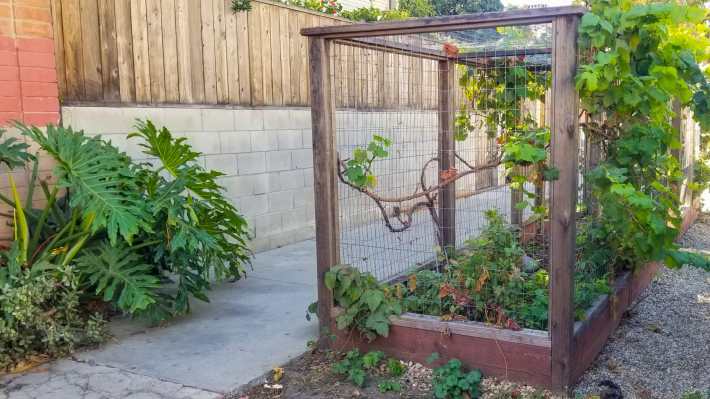
Whether planters grow vegetables and feed people or they help displace the already displaced homeless people, planters installed without a permit are breaking city laws. They’re impossible to miss visually but yet city officials find a way to ignore them. The city cares about regulating our sidewalks when it’s in their interest, such as using sidewalk ordinances to shuffle the homeless around and limit street vending. But when it comes to planters, the city depends on loopholes, rather than address the current crisis at hand.
-
Update as of November 18, 2019:
L.A. Taco has learned that 4 planter boxes on Waring Ave between Cahuenga Blvd and Lillian Way have been removed.
-
It’s no secret that homelessness in Los Angeles has soared in the last five years, deeply impacting our city and daily lives. While solutions for the homeless epidemic are still up in the air, one thing is certain: we won’t solve the problem without working together. This is why L.A. Taco and Los Angeleno have partnered to share untold stories behind these issues in a month-long series that both shines a light on covert ugly actions from our fellow Angelenos and gives a voice to the voiceless.
